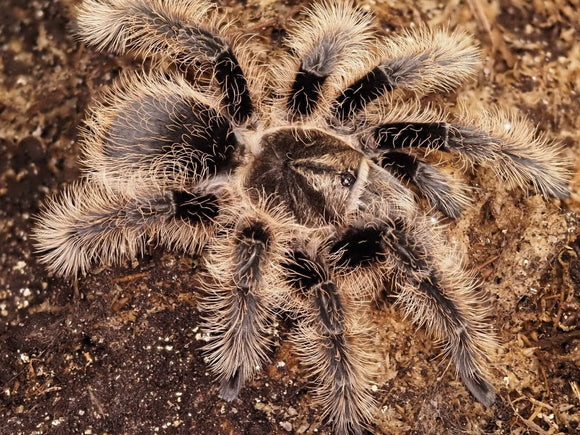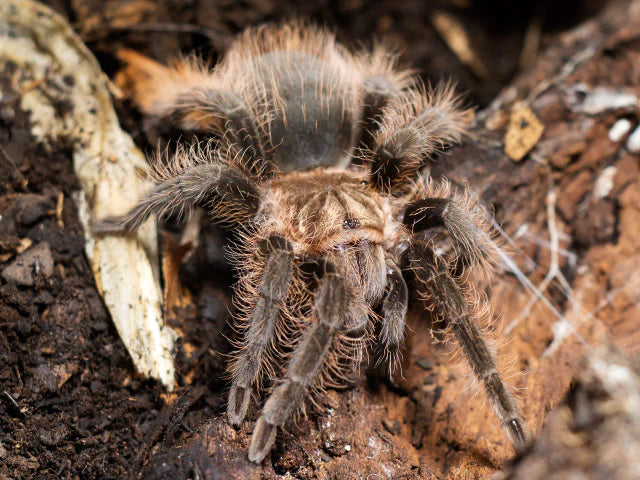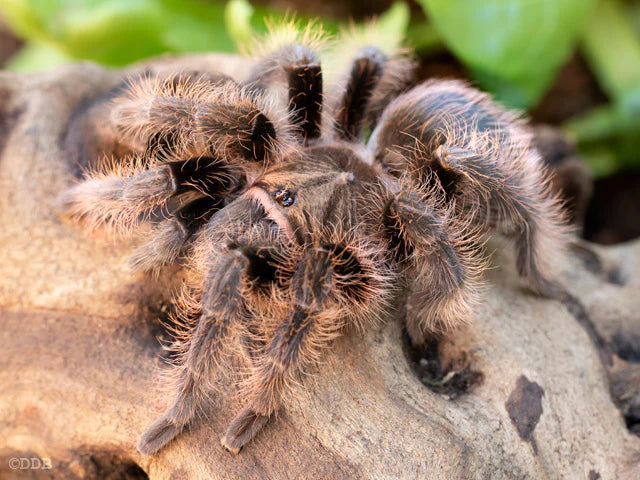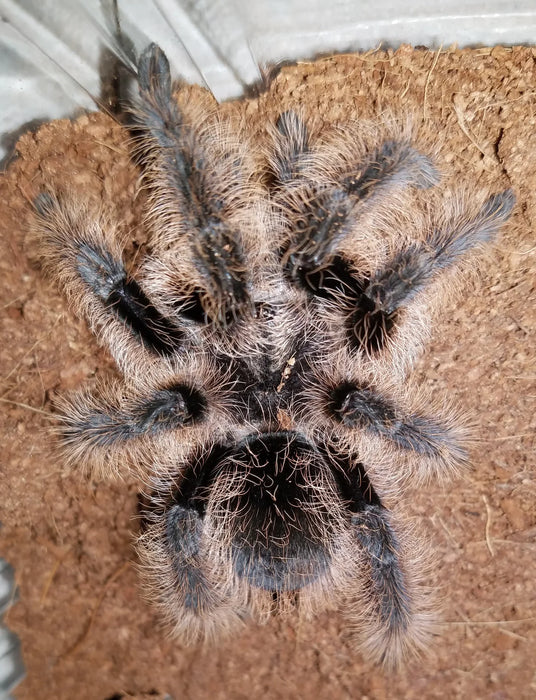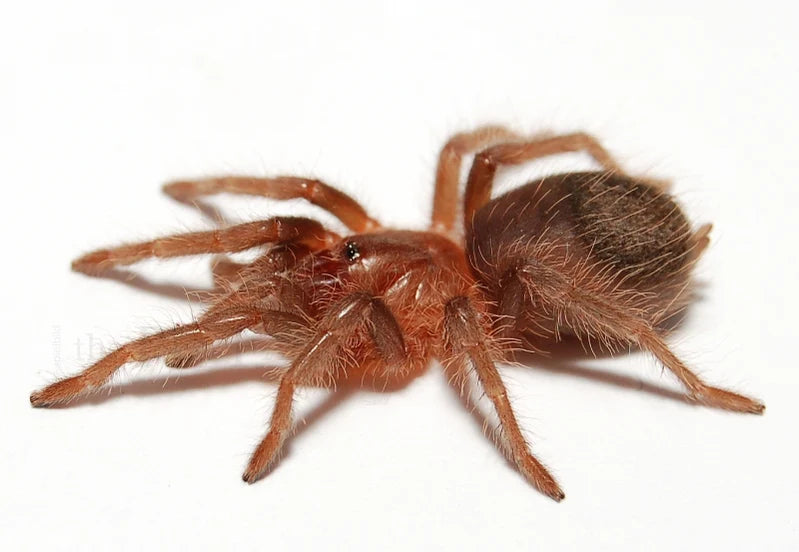
Curly Hair Tarantula | Tliltocatl ( ex. Brachypelma) albopilosus (Med)
Live Animals Are Click and Collect Only
Please note that we do not ship live animals. You can order online and collect in store.
The curly-haired tarantula is a Central American tarantula. Its distribution area is the states of Costa Rica, Venezuela, Guatemala, Nicaragua and Honduras. It is very widespread in Nicaragua and is considered a cultural successor. Brachypelma albopilosum is one of the most peaceful yet curious tarantulas. This tarantula is also very often seen outside the shelter. She often sits almost motionless in the terrarium. This species of tarantula behaves very calmly and unimpressed towards people. This spider is the perfect beginner spider.
Habitat: In the wild, these tarantulas inhabit various environments, including scrublands and tropical forests. They are known to burrow into the ground, creating silk-lined burrows that serve as their shelters and hideouts.
Temperature and Humidity: When keeping Curly Hair Tarantula spiderlings as pets, it's essential to maintain a temperature range between 75°F to 85°F (24°C to 29°C) in their enclosure. The humidity level should be moderate, with occasional misting to provide the required moisture. It's crucial to provide a water dish while ensuring it's not too deep, as tarantulas can drown.
Housing: For spiderlings, a small, appropriately sized terrarium with a secure lid is suitable. Substrate such as coconut fiber or peat moss should be provided, allowing them to burrow if desired. Decorations like pieces of bark or faux plants can create hiding spots and enrichment.
Feeding: Curly Hair Tarantula spiderlings are carnivorous and primarily feed on insects such as crickets, mealworms, or roaches. Offer appropriately-sized prey items about once a week, adjusting the size of the prey to match the spiderling's size. They are typically voracious eaters and may readily consume their prey.
Lifespan: The lifespan of Curly Hair Tarantulas can vary, with females living longer than males. Females can live up to 15 to 20 years or more in captivity, while males have a significantly shorter lifespan of around 5 to 7 years. Like all tarantulas, they go through molting stages to grow, shedding their exoskeletons.
Please note: We don't ship live animals. You can order online and choose click and collect, and we will hold it for you.

